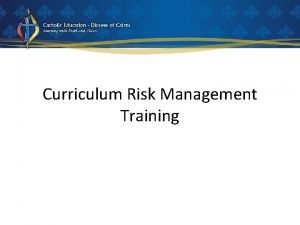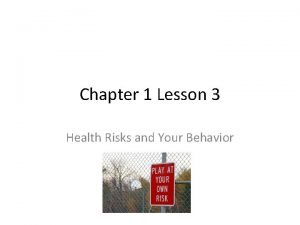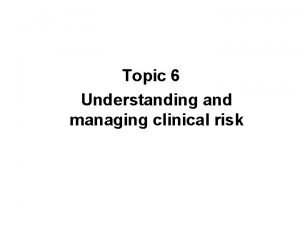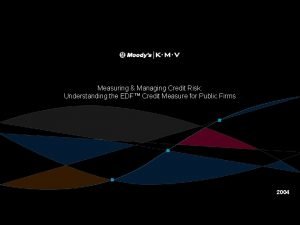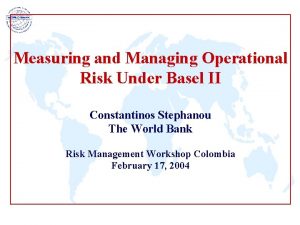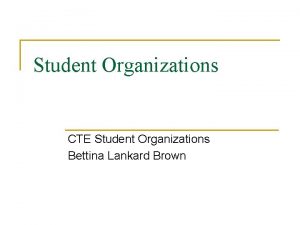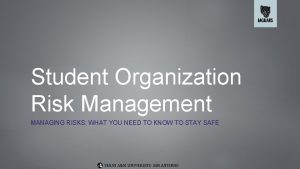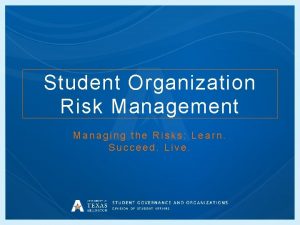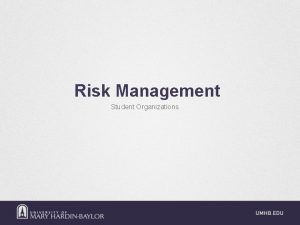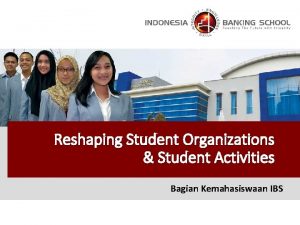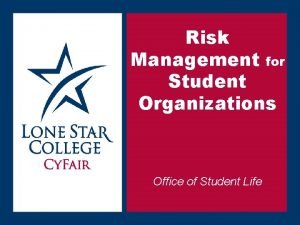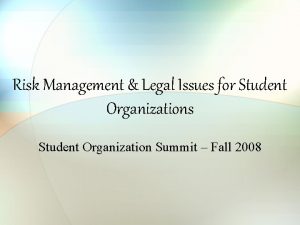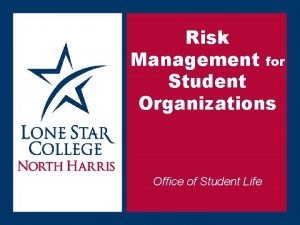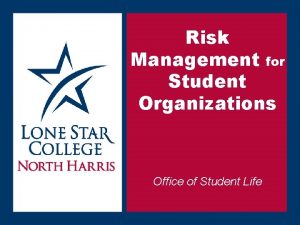Student Organizations and Activities Managing the Risks Risk

















- Slides: 17

Student Organizations and Activities: Managing the Risks Risk Research Bulletin, June 2009

Overview 1. Student General Liability Claims Study 2. Legal Duty of Care 3. Recognizing Student Organizations 4. Risk Management Strategies

United Educators Student General Liability Claims Types of Losses – Frequency and Severity (2004– 2008)

United Educators Student General Liability Claims Sponsored vs. Non-Sponsored Activities (2004 -2008)

United Educators Student General Liability Claims Average vs. Median Losses (2004 -2008)

Legal Duty of Care Duty of care: a relationship that is recognized under the law Special relationship: may be recognized with students based upon an institution’s regulation or control over student life

Legal Duty of Care Factors that may establish an institution’s duty of care: • Relationship with student organization • Funding and non-monetary support • Planning, oversight, and approval • Activity location and travel • Prior knowledge

Recognizing Student Organizations Types of Organizations • Sponsored • Independent • Unrecognized Recognition Policies • Closer relationships with some groups than others • Requirements pertain to the group’s membership, responsibilities, and privileges

Recognizing Student Organizations Sponsored Student Organizations • Closely aligned with institutional mission • Typically have a faculty or staff advisor • Funding comes from operational funds or student activity fees

Recognizing Student Organizations Independent Student Organizations • Educational purpose that the institution supports. • Are faculty/staff advising included in the scope of employment? • Funding may come from student activity fees. • Relationship is “arm’s length. ”

Recognizing Student Organizations Unrecognized Groups • Group’s mission is unrelated to institution’s mission • Not permitted to use institution’s name, logo, equipment, or facilities

Risk Management Strategies Risk Management Teams • Typically led by a Student Affairs or Risk Management administrator • Include other campus department representatives • Assess student policies/procedures on critical issues • Develop student activities operational manuals and conduct trainings

Risk Management Strategies Use of Campus Facilities • Facilities staff work closely with student organization representatives • Use application process to request use of campus facilities • Special care needed for events that pose unique risks

Risk Management Strategies Participant Releases • Applies only to voluntary activities, not for academic credit. • Narrowly tailor to specific activities. • Consult legal counsel to draft or review these forms.

Risk Management Strategies Off-Campus Travel • Establish driver qualifications. • Implement restrictions on unsafe driving. • Equip automobiles with emergency information and tools. • Require up-to-date information in advance of trip.

Risk Management Strategies Alcohol Policies • Restrict use of institution funds to purchase alcohol for student functions. • Require advanced registration and approval for alcohol at on-campus events. • Prohibit alcohol service at events with a majority of underage attendees. • Off-campus events by recognized student groups pose greatest risks.

Risk Management Strategies Hazing Key components of a policy: • Statement prohibiting hazing • Definition of hazing illustrated by examples • Reporting instructions • Institutional responses to reports • Sanctions for policy violations
 Curriculum activity risk management guidelines
Curriculum activity risk management guidelines Managing risks in schools
Managing risks in schools Managing behavior in organizations 6th edition
Managing behavior in organizations 6th edition Liquidity measures
Liquidity measures The biggest risk is not taking any risk
The biggest risk is not taking any risk Related risks that increase in effect with each added risk
Related risks that increase in effect with each added risk Managing clinical risk
Managing clinical risk Module 4 topic 5 turnabouts and parking
Module 4 topic 5 turnabouts and parking Module 4 topic 1 assessing and managing risk
Module 4 topic 1 assessing and managing risk Identifying and managing project risk tom kendrick
Identifying and managing project risk tom kendrick Lending policies and procedures managing credit risk
Lending policies and procedures managing credit risk Managing property and liability risk
Managing property and liability risk Measuring and managing credit risk
Measuring and managing credit risk Basel ii event types
Basel ii event types Chapter 7 managing risk vision and perception
Chapter 7 managing risk vision and perception Indoor vs outdoor sports
Indoor vs outdoor sports Support activities and primary activities
Support activities and primary activities Definition of primary activities
Definition of primary activities
